At Australia’s richest landscape prize, art conquered politics
This year’s $100,000 Hadley’s Art Prize offered a range of ways of seeing our wildest terrain.
This year, Hadley’s Orient Hotel in Hobart is celebrating its 190th anniversary. An icon of Tasmania’s colonial era, this veteran will never be competing with the more glamorous, expensive establishments that are springing up around town, but it has history on its side.
Stay at Hadley’s and you’ll find a plate with a picture of Queen Victoria on the wall of your room, with fixtures and fittings to match. There’s a comfortable bar and a new chef, but nothing that detracts from the period feel of the place. The appeal is to customers who crave that kind of experience.
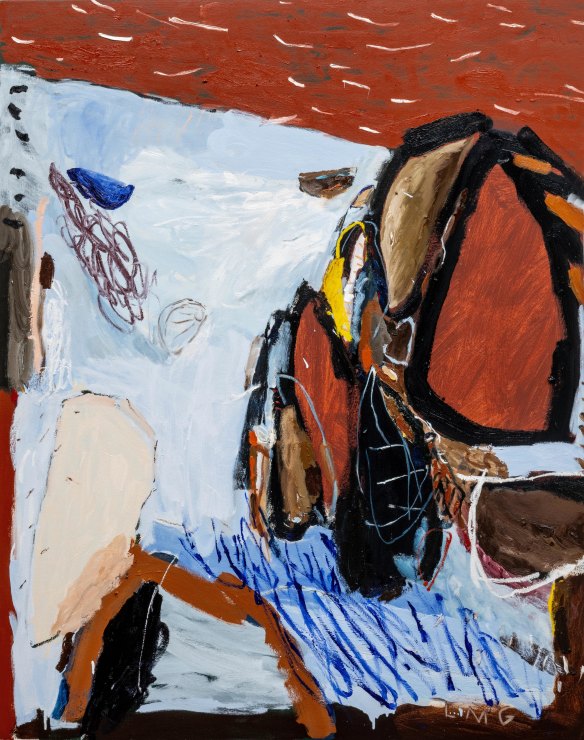
Tasmanian artist Zoe Gray won the Hadley’s $100,000 prize with her landscape painting, The Shape of Rock.
Since 2017, Hadley’s has had considerable success with a $100,000 prize for landscape, which attracts entries from all over the country. What may have begun as a promotional device has turned into a significant event on the cultural calendar. Worth twice as much as the Wynne Prize and $20,000 more than the Glover, it’s Australia’s most generous landscape art award.
With landscape, the Hadley’s Art Prize seeks to harness one of Tasmania’s major attractions. The island’s dense old-growth forests, breathtaking coastlines, rugged peaks and gorges are drawcards for nature lovers, hikers and painters. Much of the work in this year’s prize came from Tasmanian artists who sought to capture the spirit of the wilderness, including the winner, 28-year-old Zoe Gray.
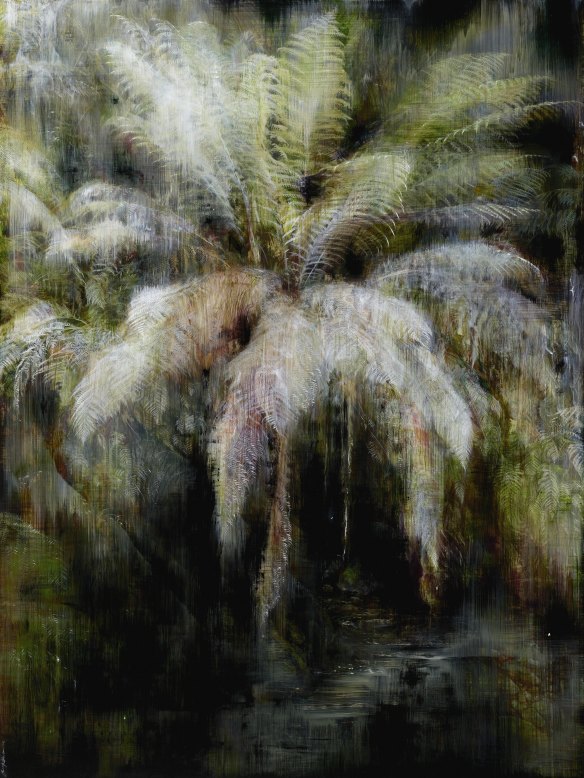
Brisbane artist Laura Patterson’s Original Shadows, Koonparoona Niara (Mountains of the Spirits)/Mole Creek, Tasmania won the $10,000 Hadley’s Residency Prize.
Another aim of the competition is to bring a range of different landscapes before a Tasmanian audience, notably works by Indigenous artists who live in hot, arid environments. Of the 35 finalists, 12 are Indigenous. Unlike this year’s Wynne Prize at the Art Gallery of NSW, there has not been a concerted effort to push the First Nations representation over 50 per cent.
For the previous two years, the Hadley’s prize has gone to Indigenous artists associated with the APY Art Centre Collective, a group that has become mired in controversy over accusations of white assistants working on paintings attributed solely to Aboriginal artists. The APYACC at first denied the allegations, then shifted ground to ask what’s so bad about black artists using assistants, just like their white counterparts?
First, these claims might have carried more weight had they been advanced immediately, rather than as a fall-back. Second, the usual method is for artists to give instructions to their assistants, who may prepare canvases or paint in background areas. But in a now-infamous video, we see the assistant making creative suggestions about how to jazz up a painting. Third, these paintings are being sold with much fuss about the artist’s tjukurrpa, a deep religious relationship to kin and country that can’t be passed on to outsiders.
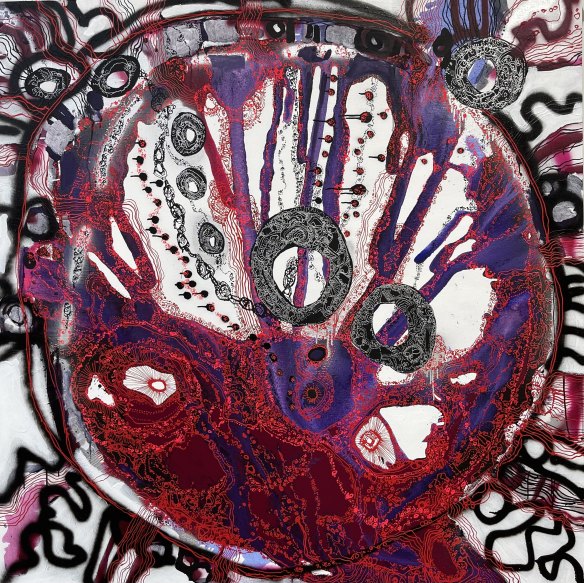
Zaachariaha Fielding’s Imma.
Although the Australian Competition and Consumer Commission has decided not to pursue court proceedings against the APYACC, ruling that the issues fall outside the provisions of its enforcement powers, this doesn’t negate the findings of an independent report commissioned by the South Australian government that has yet to be made public. The best one can say in the meantime is that the whole affair creates a good deal of uncertainty about the group’s operations.
There are a number of APYACC artists in this year’s Hadley’s, and the judges – Neil Haddon, Tina Baum and Jane Devery – came awfully close to going down that path again, giving commendations to Zaachariaha Fielding, the winner of last year’s Wynne Prize, and to the black-and-white work of Iluwanti Ken. One wonders when the novelty will wear off with Fielding’s swirly, superficial, repetitive canvases. They are essentially decorations, hardly more than disco versions of community culture. Iluwanti Ken’s pictures of eagles are much more convincing in their connection to tjukurrpa, but scarcely less repetitive.
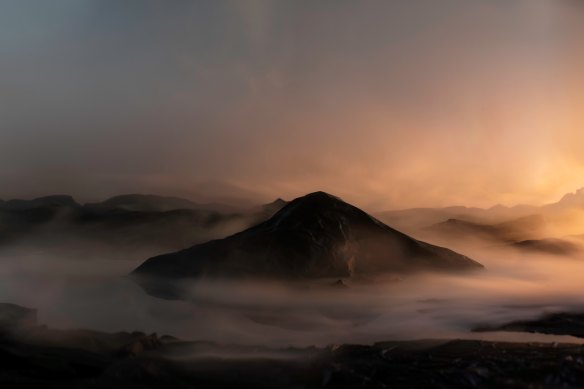
Scotts Peak, by Rosie Hastie.
And finally, putting aside all disputes about authenticity and ethics, it’s the repetitiveness that makes it hard to appreciate so much APYACC work. Rather than records of a deep spiritual connection with place, too many paintings feel like products made for a pliable marketplace.
It could be argued that most art fits this description, but with a painting of a vase of flowers or a gum tree what you see is largely what you get. An exception is another commended work by Rosie Hastie, who constructs realistic model landscapes in the studio then lights and photographs them in such a manner that they appear to be sublime views taken from an imposing height. Her work Scotts Peak is a remarkable feat of visual deception that is only fully appreciated once we recognise the trick.
A fourth and final commendation went to Queensland artist Naomi Hobson for a typically crowded and colourful picture called Wuukanta: Life on the River. That’s three out of four Indigenous commendations, but both major prizes went to non-Indigenous artists, the top award to Zoe Gray’s abstracted landscape The Shape of Rock, and a Hadley’s Residency Prize, worth $10,000, to Brisbane’s Laura Patterson for Original Shadows, Koonparoona Niara (Mountains of the Spirits)/Mole Creek, Tasmania, a moist, atmospheric painting of ferns captured in a shimmering light.
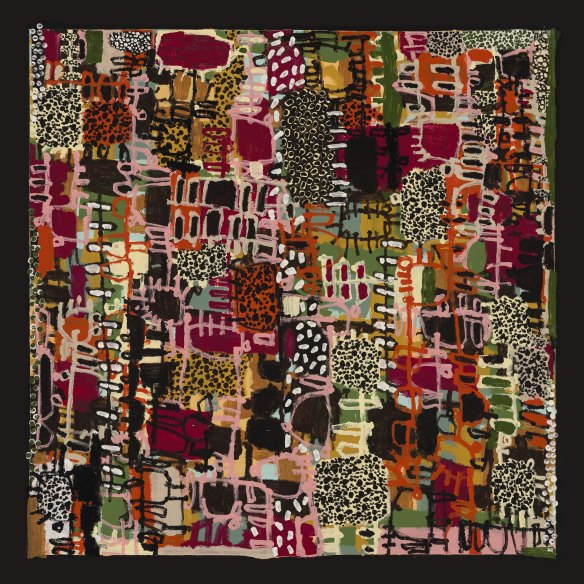
Naomi Hobson’s Wuukanta: Life on the River.
Two talented young artists, these were excellent choices for the future of the prize. Gray hails from Marrawah, a small town on the north-western tip of Tasmania, known as a surfing destination. Her winning entry is the kind of picture one associates with artists such as Ann Thomson – a landscape in which the forms of rocks and water remain recognisable, but it’s the vigour of the paintwork and variety of mark-making that lights up the canvas. Above all, there’s a sense of exhilaration about this work, as one feels the artist’s vivid immersion in the scene she is painting.
This is the case with most of the Tasmanian works in the show, from a spectacular vertical view of a narrow gorge on the Gordon River by another young artist, Harrison Bowe, to Stephanie Tabram’s fastidiously painted Afternoon Below Table Mountain.
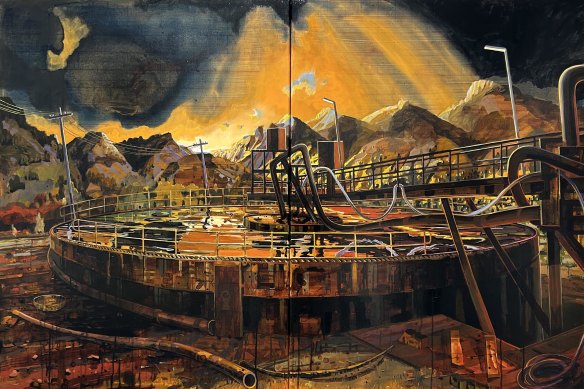
Raymond Arnold’s A Wreckage of Ellipses – Acid Mine Drainage Tank.
There’s also a more apocalyptic side to the Tasmanian artists, as in Raymond Arnold’s A Wreckage of Ellipses – Acid Mine Drainage Tank, a hellish vision of industrial despoliation, or Philip Wolfhagen’s Signals II, which features five identically sized small pictures of dark, circular clouds floating over a shadowy landscape. Fiona Francois has continued this mood with a detailed drawing of a dead Miena Cider Gum, a tree close to extinction.
Perhaps the most surprising entry in this group of anxious landscapes is Amanda Johnson’s Colonial Heat: Panninher Country, Longford, a depiction of bare, rolling slopes in shades of pink, creating an impression of searing heat. It’s not what one expects from a pastoral view of Tasmania.
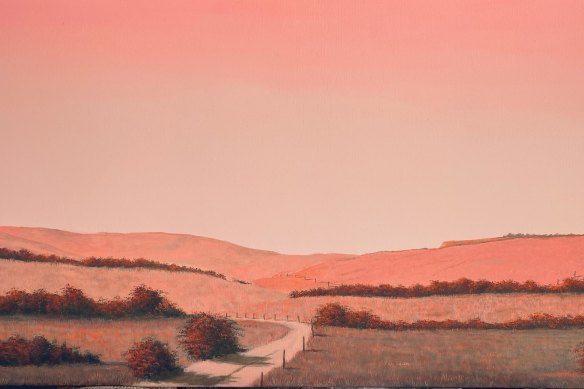
Colonial Heat: Panninher Country, Longford by Amanda Johnson.
No art prize is selected and judged with perfect objectivity, but this year the Hadley’s seemed to get its priorities right: providing a showcase for established and emerging Tasmanian artists, giving a generous but not excessive platform to Indigenous artists, and dealing in an imaginative way with the spectre of climate change.
None of these emphases detracted from the sense that it was the art rather than the politics that mattered most. Let’s hope it’s the start of a trend.
Hadley’s Art Prize 2024 is at Hadley’s Orient Hotel in Hobart until August 25. John McDonald was a guest of Hadley’s Orient Hotel.
To read more from Spectrum, visit our page here.